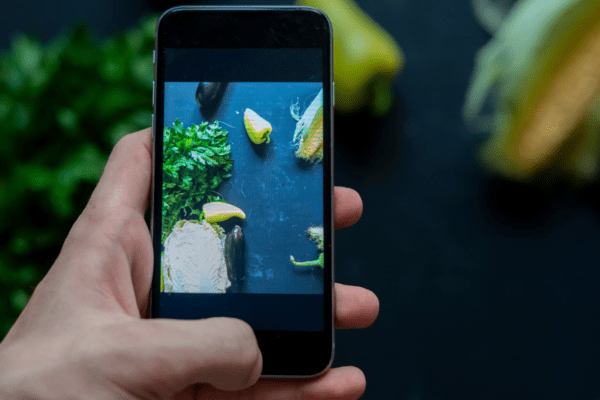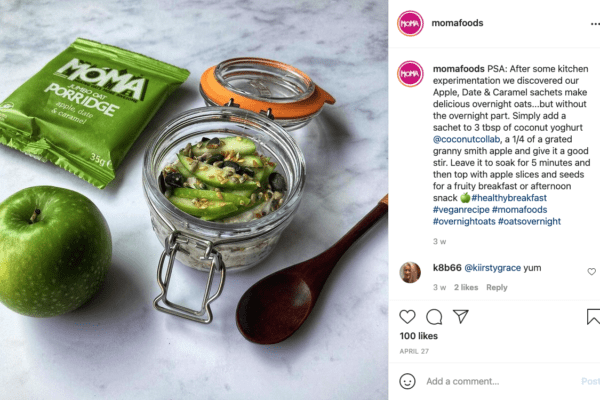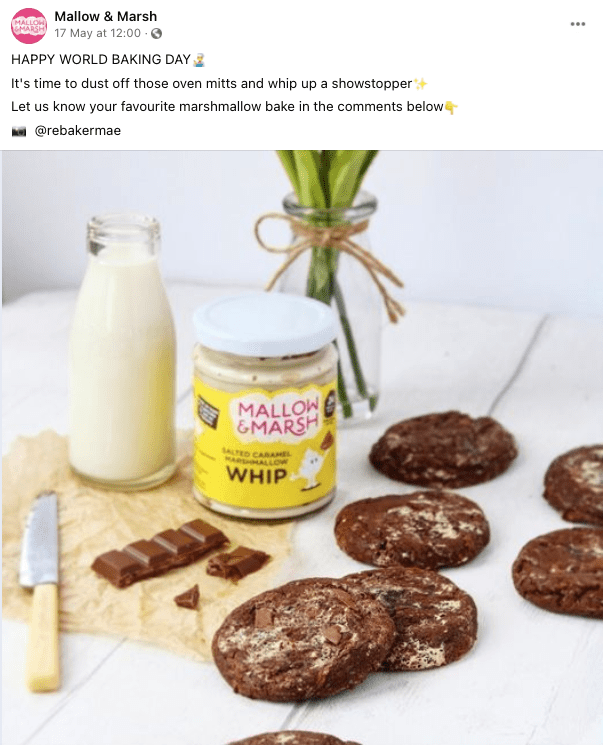A good social media strategy is a powerful thing and has proven success in driving results for companies in the food industry.
Take mochi ice cream company Little Moons for example. Thanks to an amazingly viral TikTok campaign their sales increased by a massive 1,300%. Their brand awareness shot up exponentially, especially among the younger generations that are typically found on the short-form video platform. Supermarkets were running out of stock because of the high demand, and they became a household name.
@littlemoonsmochi 🍡MOCHI MIX CHALLENGE🍡 Find us in Tesco, Waitrose, Ocado, Whole Foods, Amazon Fresh. #mochimixchallenge #littlemoons #littlemoonsmochi #fyp #viral
But Little Moons’ success is not because of luck, it is because of their smart strategy. They achieved this through compelling organic content that felt authentic to TikTok, followed by a One-Day-Max In-Feed Ad to reach as many people as possible in the right way. Instead of the classic hard sell, they focused on delivering content that inspired, engaged and entertained, and the results speak for themselves on the impact of that strategy.
In this blog, we’re going to be taking a look at our top tips for food companies on social media to help you optimise your efforts.
Who is your typical customer? Who is likely to take little persuasion to purchase your products? It is fundamental to have a clear image of your target audience before creating any marketing strategies or content. How old are they? What hobbies do they have? What sort of job do they do? The answer won’t be the same for every single customer, but there will be a sort of person that can provide easy wins for you and you should know what they look like.
For food companies, some of the key things you will particularly want to know about your target audience are their go-to supermarket, eating and cooking habits, and what they most care about when it comes to their food. Do they actively look for Fairtrade logos or are they looking at the price tag before anything else?
Knowing your customers inside out will then enable you to have them in mind with everything you do. You can tailor the platforms you use based on their age and your content to what they care about to see meaningful results.
Rather than being everywhere, focusing your efforts on the right platforms for your company can drive far better results.
Following on from point 1 above, if you know your customers or your target audience you can figure out where they are most likely to be. Is your average customer under 30? Make sure you utilise younger platforms like TikTok. Even if you don’t use it in your own personal life, take the time to familiarise yourself with the basics and see how similar businesses are making the most of the platform.

The marketing elements you have available should also be considered when figuring out where you should be on social media. If you don’t have many good quality photos of your food and won’t be able to take them regularly, there is no point in trying to make Instagram your main platform.
You may be able to utilise Stories with off-the-cuff photography, but in their newsfeed most Instagram users expect a certain level of quality unless exceptional circumstances apply, and it can seem unprofessional if you don’t meet this. Most people on most phone cameras will be able to reach this quality level after a few tries, but if that’s not you then consider if another platform might be more appropriate for you.
On the other hand, if you have plenty of blogs and recipes, don’t make the mistake of missing out on the potential reach and website traffic you could achieve through Pinterest. As your assets increase, or your range of products and target demographics broaden, you can always make well-timed and planned launches onto a new platform. Just remember, you should show people what they want to see in the place they want to see it.
People are increasingly buying into brands, not just products, and so the behind-the-scenes of your business and your values have possibly never been so important.
What ingredients do you use? If you ensure all your ingredients are ethically sourced let your customers know. If you locally source whatever you can then talk about it, and you might even want to give your local suppliers a shout out.
If you’re working on new products or packaging, give your social followers a teaser. If there’s a story behind why or how the business was started, then tell it. The more you can show the human side of your company, show that you have feelings and are working hard to make great quality products, the more there is for people to connect with.
The modern customer doesn’t just want your business to create great products, they also want you to care.

Whether your food products are ingredients or ready to eat, make sure your content includes them in use. This helps potential consumers to easily picture themselves using or eating your products.
For example, if you’re selling a condiment, regularly show it on a plate with other food or get video footage of it being put on meals. Or, if you’re selling snacks, get pictures in different locations where people might be eating your product – would it be eaten on-the-go in the car, at the office desk or when curled up on the sofa?
If your products are ingredients or could be used as ingredients, get pictures of the cooking or baking process and the finished project, or get creative with Reels or TikTok to show the process.

If you don’t have the budget for professional photography or videography for this then don’t worry, when it comes to social media as long as you have a basic working knowledge of using a phone camera that’s enough! What’s more, expirable content like Stories is perfect for sharing a lower quality snapshot you don’t want to sit on your main profile permanently.
There are a host of social media awareness days and months related to food, so keep an eye out ahead of time and mark your calendar with upcoming days than can be applied to your products. To not join a relevant conversation when you can anticipate it in advance is a wasted opportunity.

However, there will also be opportunities that you won’t be able to predict. Keep an eye on the latest news and trends and be prepared to be flexible if something appropriate pops up. If an article on the environmental benefits of veganism gains wide attention and your company specialises in vegan products, switch your focus immediately so you can maximise on it while people still care.
Further to this, when creating content it is important to consider wider timing, such as the season. The more you can tie your product focuses and messaging to what your customers are currently experiencing, the better. For example, if you’re an ice cream company, in summer you would want to show people eating your products outside in the sun, but in winter you would benefit more from showing your ice cream being eaten indoors and alongside hot puddings.
Now you have the knowledge to begin tackling your social media marketing strategy, just remember to put yourself in your followers’ shoes every time you create content. Will they be inspired, entertained or moved by what you’re posting? If the answer’s yes, then you can rest assured you’re on the right track.